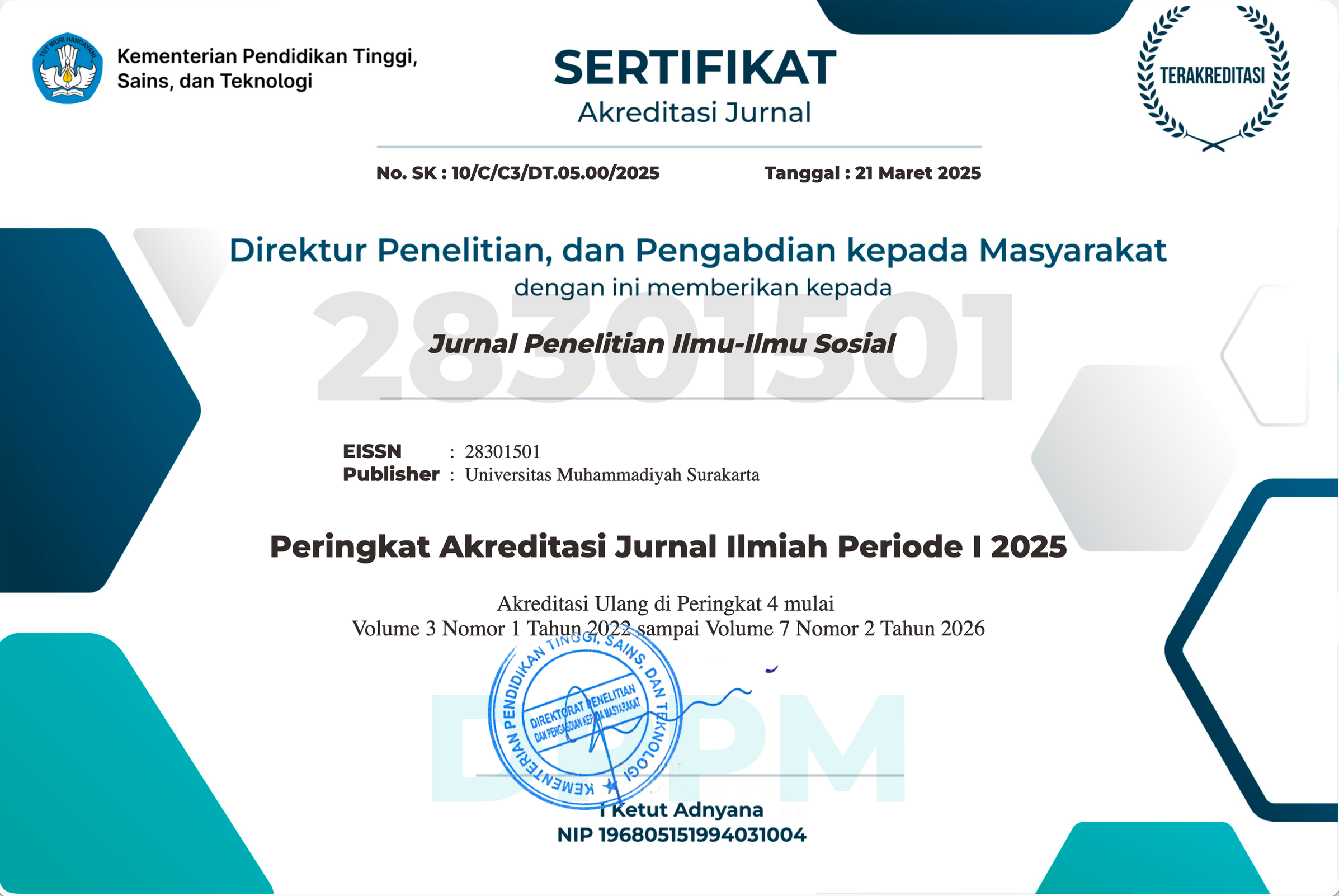Semiotic Analysis of Bullying Practices in Drama School 2015: Study of Emile Durkheim's Theory of Suicide
DOI:
https://doi.org/10.23917/sosial.v5i1.718Keywords:
bullyying, drama, suicideAbstract
The existence of humans as social beings is represented through the formation of social groups as an effort to maintain and develop their lives. However, instead of forming harmony and balance, humans also often commit social deviations, one of which is through bullying behavior. Bullying behavior does not only occur in the work environment but has entered the school environment. One of them is in South Korea, where bullying rates and suicide rates are both high, showing that there is a relevance between bullying rates and suicide rates. Now, this phenomenon is constructed through drama as a reflection of social reality. The focus of this research is to find out how the practice and relevance of bullying behavior and suicide cases in the 2015 school drama. The research method used is Ferdinand De Saussure's semiotic analysis method which focuses on discussing the concept of signifiers and signifieds. The data studied are pieces of dialogue, images, and sound. In this study the authors used Emile Durkheim's Suicide theory. The findings in this study are that there is a relevance between bullying practices and suicide cases. This is also exacerbated by the finding that victims of bullying often do not have adequate social groups. Because the more individuals have sufficient social groups, then this is capital in maintaining their lives from other social groups. The location of the social group greatly influences a person's decision to commit suicide. Thus, the social group has an important position for a person as part of his efforts to defend himself and maintain his self-esteem and the harmony of social relations.
Downloads
References
Andriani, N.; Elita, V.; Rahmalia, S. (2011). Hubungan Bentuk Perilaku Bullying Dengan Tingkat Stres Pada Remaja Korban Bullying. Program Study Ilmu Keperawatan 426–35.
Arif, A. M. (2020). Perspektif Teori Sosial Emile Durkheim Dalam Sosiologi Pendidikan. Moderasi: Jurnal Studi Ilmu Pengetahuan Sosial 1(2):1–14. doi: 10.24239/moderasi.vol1.iss2.28.
Durkheim, E. (1897). Le Suicide. edited by F. Alcan. Paris: Annciene Librairie Germer Balliere.
Jariah, R. A.; Rahman, F.; Amir, M. P. (2022). Social Problems In Drama 13 Reasons Why: Peirce Semiotics Approach. TEKSTUAL 20(1):48–60. doi: 10.33387/tekstual.v20i1.4508.
Jones, R. A. (1986). Bunuh Diri (1897). Durkheim.Uchicago.Edu. https://durkheim.uchicago.edu/Summaries/suicide.html
Kusumasari, F. (2020). Eksistensi Perempuan Dalam Film (Analisis Semiotika Terhadap Film Athirah, Salawaku, Dan Aisyah Biarkan Kami Bersaudara). 29.
Kedutaan Besar Republik Korea untuk Republik Indonesia. (2005). Agama Penduduk Korea Selatan. Overseas.Mofa.Go.Kr. https://overseas.mofa.go.kr/id-id/wpge/m_2764/contents.do
L.Yoon. (2024). Distribusi penduduk di Korea Selatan per November 2023 menurut agama. Statista.Com. https://www.statista.com/statistics/996013/south-korea-population-distribution-by-religion/
Pratiwi, K. P.; Hasanah, U. (2016). Representasi Perilaku Bullying Dalam Drama Korea School 2015. Doctoral dissertation, Universitas Gadjah Mada, Yogyakarta.
Prilyanti, D., Eulina, Eulina, I. S. (2019). Bangkit Melawan Bullying. 5(8):1.
Purba, J. (2005). Pengelolaan Lingkungan Sosial. kedua. Jakarta: Yayasan obor Indonesia.
Purwanti, S.; Rohmah, A. N. (2020). View Of Mahasiswa Dan Bunuh Diri Resiliensi Mahasiswa Dalam Menghadapi Skripsi. Pengabdian Pada Masyarakat 4(4):8.
Sari, R. N.; Agung, I. M. (2015). Pemaafan Dan Kecenderungan Perilaku Bullying Pada Siswa Korban Bullying.” Jurnal Psikologi UIN Sultan Syarif Kasim Riau 11(Juni):32–36.
Setiowati, A.; Dwiningrum, S. A. (2020). Strategi Layanan Bimbingan Dan Konseling Di Sekolah Dasar Untuk Mengatasi Perilaku Bullying. Elementary School: Jurnal Pendidikan Dan Pembelajaran Ke-SD-An 7(2). doi: 10.31316/esjurnal.v7i2.750.
Sugiyono. (2008). Metode Penelitian Kuantitatif, Kualitatif, R Dan D. Bandung: Alfabeta.
Voronov, M., & Singer, J. A. (2002). The myth of individualism-collectivism: A critical review. Journal of Social Psychology, 142(4), 461–480. https://doi.org/10.1080/00224540209603912

Downloads
Submitted
Accepted
Published
Issue
Section
License
Copyright (c) 2024 Anisatul Khanifah, Sugeng Harianto

This work is licensed under a Creative Commons Attribution 4.0 International License.















